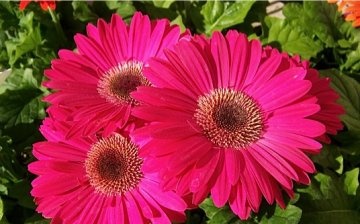Gerberas: transplant and care
Gerbera is appreciated all over the world for its beauty and long-lasting cut flowers. It is grown mainly in greenhouses and as a houseplant. Only in the southern regions can these perennials survive the winter without dying, and even then under a thick layer of spruce branches, dry leaves or straw. In the middle lane, gerberas are required to be transplanted into a pot for the winter, for storage in a cool room at a temperature of 7-8 degrees Celsius. The diameter of the pot should be at least 20 cm, the substrate consists of peat and leafy soil with the addition of sand. The root collar is buried in the ground to avoid decay.
In the spring, a gerbera can be transplanted into open ground no earlier than when the air warms up to 20 degrees, or it must be placed in a greenhouse with heated soil. This exotic chamomile is a plant so delicate that it can be destroyed not only by the lightest and most short-term frost, but simply by a drop in soil temperature below 8 degrees. The plant needs slightly acidic soil, frequent but moderate watering. It is advisable to do root and foliar dressing without chlorine a couple of times a month. The introduction of organic fertilizers is undesirable, they often cause rot of the root collar.
Gerbera propagates by dividing the bush before planting in the ground in spring, or by seeds. The seed method is used less often, since in this case the seedlings often do not inherit the properties of the mother plant. Seeds are sown in January-March in seedling boxes in a light soil mixture, without burying them in the ground. Seedlings will appear in about a week, and after a month, the seedlings can already be dived.




Can you tell me, but at home in a pot, without planting it outside in a greenhouse, can it be grown? Or will it not grow at home?